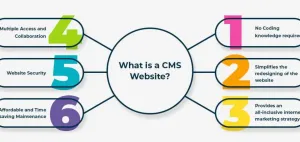Kodi is a powerful, open-source media player that allows users to organize, stream, and control their media collections with complete customization and data ownership. Its self-hosting capabilities make it a favorite among tech-savvy users who value privacy and flexibility. In this guide, we’ll cover everything from installing Kodi and configuring it for secure remote access to managing logs, backups, updates, and advanced features.
Installing Kodi
📦 Docker/Docker Compose Setup
Using Docker simplifies Kodi deployment by containerizing the app and its dependencies. Below is a sample docker-compose.yml file to set up Kodi on your server.
version: '3.8'
services:
kodi:
image: linuxserver/kodi-headless:latest
container_name: kodi
ports:
- "8080:8080" # Kodi's web interface
- "9090:9090" # JSON-RPC API
volumes:
- /path/to/kodi/config:/config
- /path/to/kodi/media:/media
restart: unless-stopped
Deploy Kodi with the following commands:
docker-compose up -d
## Verify the container is running
docker ps | grep kodi
🚀 Manual Installation
For direct installation on a Linux server, follow the steps below to install Kodi from the repository:
## Update the system
sudo apt update && sudo apt upgrade -y
## Install dependencies
sudo apt install software-properties-common -y
## Add the official Kodi PPA
sudo add-apt-repository ppa:team-xbmc/ppa -y
## Install Kodi
sudo apt install kodi -y
Verify the installation by running:
kodi --version
Configuring Nginx as a Reverse Proxy
🌐 Nginx Configuration
Set up Nginx to act as a reverse proxy for Kodi. Create a new server block configuration file for Kodi:
server {
listen 80;
server_name kodi.yourdomain.com;
location / {
proxy_pass http://127.0.0.1:8080;
proxy_set_header Host $host;
proxy_set_header X-Real-IP $remote_addr;
proxy_set_header X-Forwarded-For $proxy_add_x_forwarded_for;
proxy_set_header X-Forwarded-Proto $scheme;
}
}
Save the file as /etc/nginx/sites-available/kodi and enable it:
sudo ln -s /etc/nginx/sites-available/kodi /etc/nginx/sites-enabled/
sudo nginx -t
sudo systemctl reload nginx
🔒 SSL/TLS Setup
Secure the Kodi server with Let's Encrypt:
sudo apt install certbot python3-certbot-nginx -y
sudo certbot --nginx -d kodi.yourdomain.com
Automate certificate renewals:
sudo crontab -e
## Add the following line:
0 3 * * * certbot renew --quiet
🛠️ Testing and Reloading Nginx
After making changes, test the configuration and reload Nginx:
sudo nginx -t
sudo systemctl reload nginx
Logging and Debugging Kodi
🗃️ Enabling Debug Logs
Enable debug-level logging in Kodi by editing the AdvancedSettings.xml file:
nano /path/to/kodi/config/userdata/advancedsettings.xml
Add the following content:
<advancedsettings>
<loglevel>2</loglevel> <!-- 2 enables debug logging -->
</advancedsettings>
📄 Viewing Logs
Access Kodi logs through Docker or directly from the file system:
## Using Docker
docker logs kodi
## From the file system
tail -f /path/to/kodi/config/kodi.log
🛠️ Troubleshooting Common Issues
Analyze logs to troubleshoot errors like connectivity issues or addon failures. For example, if Kodi fails to connect to a server, look for errors starting with [ERROR] in the logs.
📤 Exporting Logs
Send Kodi logs to an ELK stack for advanced analysis:
docker run -d --name filebeat \
-v /path/to/kodi/config:/var/log/kodi \
-e ELASTICSEARCH_HOST=your-elk-host \
docker.elastic.co/beats/filebeat:7.15.0
Backup and Restore
🗂️ File-Based Backups
Backup Kodi’s configuration files and media:
tar -czvf kodi_backup_$(date +%F).tar.gz /path/to/kodi/config /path/to/kodi/media
🔄 Database Backups
If Kodi is configured to use a MySQL database, back it up with:
mysqldump -u kodi_user -p kodi_database > kodi_db_backup.sql
📅 Automated Backup Scripts
Automate backups with cron:
crontab -e
## Add the following line:
0 2 * * * tar -czvf /path/to/backups/kodi_backup_$(date +\%F).tar.gz /path/to/kodi/config /path/to/kodi/media
Updating and Upgrading Kodi
⬆️ Updating Docker Images
To update Kodi’s Docker container, pull the latest image and recreate the container:
docker-compose pull
docker-compose up -d
🛠️ Manual Updates
For manual installations, update the package:
sudo apt update
sudo apt upgrade kodi -y
🔍 Checking for Updates
Verify whether updates are installed by checking the version:
kodi --version
Leveraging Kodi’s Unique Features
🔧 Enabling APIs
Activate Kodi’s JSON-RPC API for integrations. Edit the settings.xml file:
nano /path/to/kodi/config/userdata/settings.xml
Add the following:
<settings>
<services>
<webserver>true</webserver>
<webserverport>8080</webserverport>
<jsonrpc>true</jsonrpc>
</services>
</settings>
Test the API with curl:
curl -X POST -H "Content-Type: application/json" \
-d '{"jsonrpc": "2.0", "method": "JSONRPC.Ping", "id": 1}' \
http://kodi.yourdomain.com:8080/jsonrpc
🌟 Advanced Configurations
For advanced customization, add plugins, configure skins, or integrate Kodi with external tools like Plex by placing the required files in /path/to/kodi/config/addons.
Wrapping Up
This guide has covered the full spectrum of deploying, configuring, and managing Kodi in a self-hosted environment. From installation and secure access to backups and leveraging advanced features, you now have the tools to harness Kodi’s power fully. Start implementing these steps today and enjoy the vast flexibility and control that Kodi offers for your media management needs.




